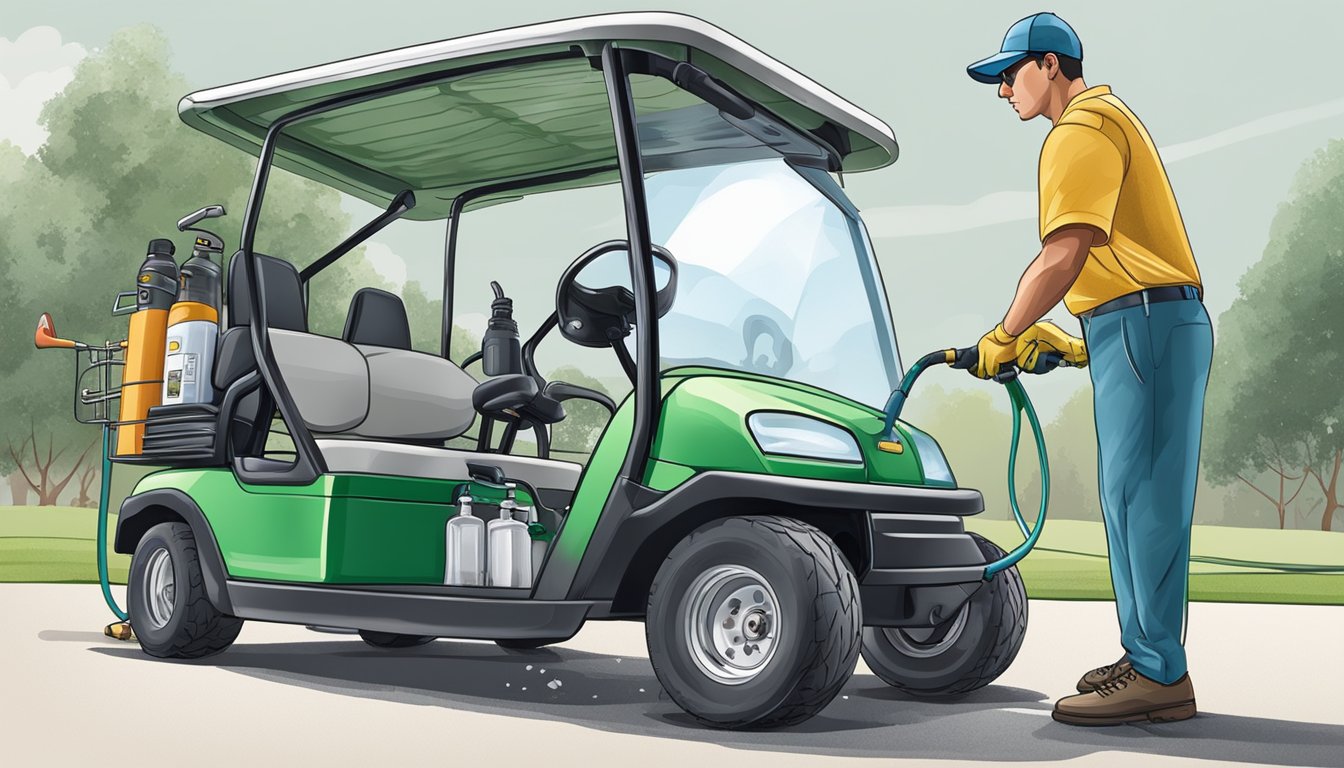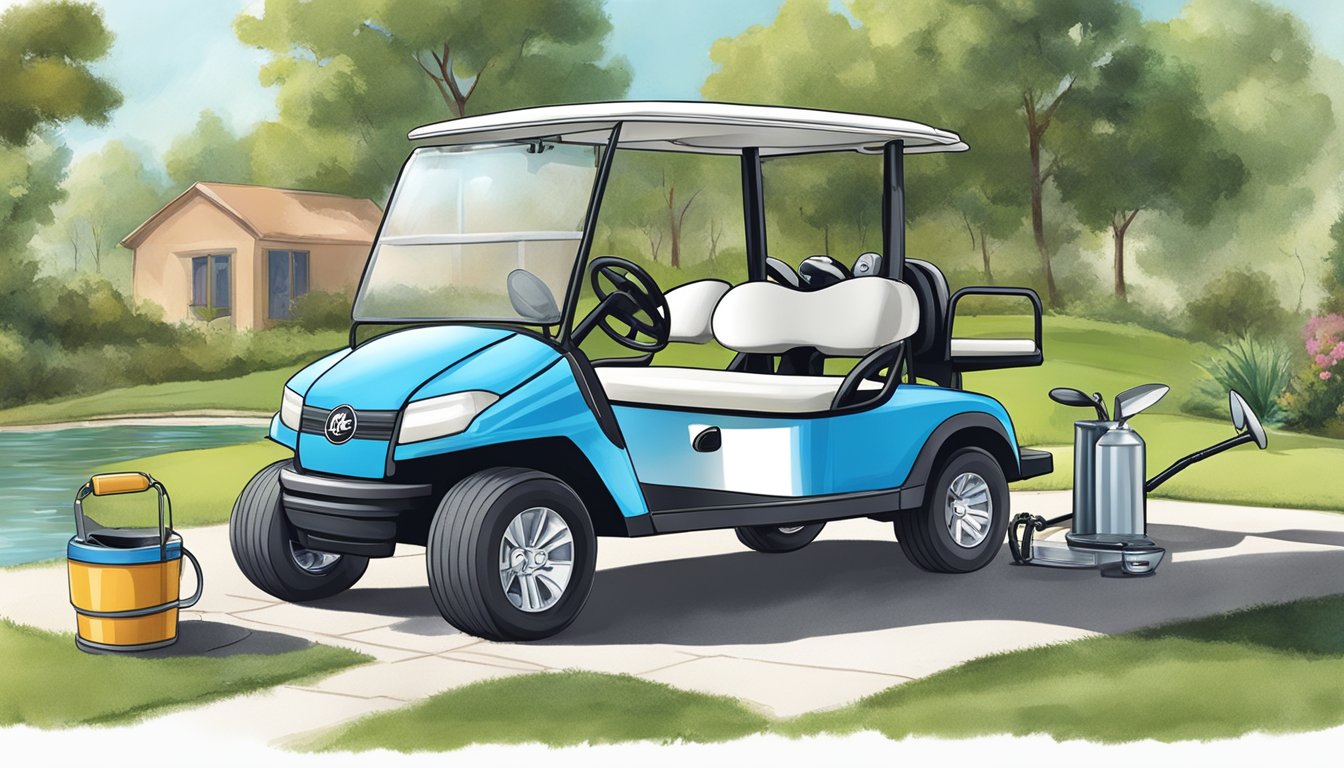Maintaining golf cart batteries is critical for their longevity and performance. One of the most essential aspects of battery maintenance is the regular addition of water, which safeguards against damage and ensures efficient energy storage. Over time, during the normal charge and discharge cycle of a golf cart battery, water loss can occur. To prevent the battery’s internal plates from being exposed to air—which can cause irreversible damage—water must be replenished. It’s crucial to use the right type of water as the minerals in tap water can lead to a build-up that impairs battery function.

Implementing a consistent watering routine will not only extend the life of the batteries but also promote better vehicle performance. Typically, batteries should be checked for water levels monthly, or bi-monthly if used daily. By ensuring that the water levels are adequate—not below the top of the plates and not overfilled—we can avoid the costly replacement of golf cart batteries and ensure reliable operation of the vehicle. It is important to note that the batteries should be fully charged before checking the water levels to get an accurate read. Only distilled or deionized water should be used to fill the cells because these are free of minerals that could harm battery components.
Key Takeaways
- Regularly adding water to golf cart batteries prevents damage and ensures efficiency.
- Watering should be done monthly, with distilled or deionized water only, after fully charging the batteries.
- Proper maintenance extends battery life and enhances golf cart performance.
Maintaining Proper Water Levels
Maintaining the right water levels in golf cart batteries ensures their longevity and optimal performance. We’ll guide you on when to check the levels, how to top off correctly, and the importance of using distilled water.
When to Check Water Levels
It’s vital that we check the water level in each battery cell regularly. The optimal time is after fully charging the batteries, ensuring accurate readings. We should aim to inspect the levels monthly or more often during periods of heavy use to avoid any damage due to low electrolyte levels.
How to Top Off Correctly
When topping off, we must be cautious not to overfill. To add water correctly, follow these steps:
- Remove the vent caps and check the water level in each cell.
- Fill each cell with distilled water until the water reaches about 1/2 inch below the top of the cell or the fill line, ensuring the level is just above the lead plates.
- Avoid filling to the brim as expansion during charging could cause overflow.
Correctly topping off the water to the advised level, not exceeding the fill line, is crucial for the health of the battery.
The Role of Distilled Water
Using distilled water is non-negotiable when we refill our golf cart batteries. Tap water often contains minerals that can build up and interfere with the battery’s function. We must always use distilled water to prevent contamination and maintain the proper electrolyte level, ensuring our batteries function efficiently.
The Importance of Battery Watering Systems
When maintaining golf cart batteries, we cannot overlook the crucial role of a battery watering system. It’s a tool that simplifies maintenance and ensures the longevity of our batteries.
Benefits of Battery Watering Systems
- Safety: A well-designed system helps us avoid direct contact with battery acid, reducing the risk of acid burns or damaged clothing.
- Longevity: Consistent and proper water levels extend battery life.
- Efficiency: Systems like Flow-Rite and Pro-Fill Single Point Watering streamline battery maintenance, saving us time and effort.
- Cost-Effectiveness: Over time, the system pays for itself by preserving battery health and function.
Choosing a Battery Watering System
When selecting a system, we must consider:
- Compatibility: Ensure it fits with our specific battery type and golf cart model.
- Quality: Look for reputable brands that offer durable and reliable systems.
- Features: A flow indicator can be a valuable addition for monitoring water levels at a glance.
Installation Guide
The steps for installing a system like Flow-Rite or Pro-Fill generally include:
- Preparing the golf cart batteries by ensuring they are clean and free of debris.
- Attaching the system to the battery cells, typically by replacing the existing battery cell caps with the new watering system caps.
- Connecting the tubes as per the manufacturer’s instructions to link the cells together.
- Running a final check to ensure the system is properly installed and there’s no leakage.
In our use of a battery watering system, we aim for efforltess maintenance without compromising safety or efficiency. It’s a strategic investment for those relying on electric golf carts, whether for recreational or operational purposes.
Troubleshooting Common Issues
In maintaining golf cart batteries, we need to ensure that common issues are identified and resolved promptly to maintain optimal battery life and performance. Proper troubleshooting is essential, as even minor errors in watering can lead to irreversible damage.
Recognizing Watering Mistakes
When watering golf cart batteries, the use of tap water is a common mistake due to its potential to introduce unwanted minerals that can affect battery capacity. We recommend using distilled water to avoid mineral buildup. Additionally, over-watering can cause electrolytes to overflow, while under-watering can lead to the drying out of the plates and reduce battery life. Following a guide or using a ruler to measure the water level can prevent these mistakes.
Addressing Capacity and Sulfation Problems
To maintain the battery’s capacity, it’s crucial to ensure the water level covers the plates but does not reach the top of the battery case. If the battery is watered improperly and the plates are exposed, sulfation may occur, which deteriorates battery function. Regular battery maintenance, including frequent checks and adjustments to electrolyte levels, can mitigate sulfation issues.
Preventing Corrosion and Damage
Corrosion can be the result of overfilling the battery cells, leading to acid leaks. We can prevent this by keeping the top of the batteries clean and dry. Ensuring proper water levels and cleaning terminals with a solution of baking soda and water helps in preventing corrosion. Tightening connections and applying anti-corrosion gel on the terminals also prevent damage and ensure the longevity of the battery.
Understanding Golf Cart Batteries

In this section, we’ll explore the fundamental aspects of golf cart batteries, including their basic design, the chemistry that powers them, and the various types available on the market.
Battery Basics
Golf cart batteries are deep-cycle lead acid batteries specifically designed to offer long durations of power, making them suitable for the stop-and-go nature of golf cart usage. Each battery is made up of cells, with each cell typically-producing about 2 volts. Hence, a typical 36-volt golf cart would require a series of 18 cells across 6 batteries.
Components and Chemistry
The main components inside a battery cell include lead plates and sulfuric acid electrolyte. When a golf cart battery is in use, a chemical reaction occurs between these two components, allowing it to store and deliver electricity. As the battery discharges, the sulfuric acid reacts with the lead plates, creating lead sulfate and releasing electrons. When we recharge the battery, this chemical process is reversed, restoring the sulfuric acid’s concentration.
Types of Golf Cart Batteries
There are primarily three types of golf cart batteries which can be classified based on voltage outputs:
- 6-volt batteries: Common in older and some entry-level golf carts.
- 8-volt batteries: Found in an array of golf carts, offering a balance between capacity and weight.
- 12-volt batteries: Typically used in modern, more energy-demanding golf carts.
It’s crucial to select the right type and combination to match the golf cart’s designed voltage requirements.
Charging Golf Cart Batteries
Properly charging our golf cart batteries is crucial for maintaining their longevity and performance. It’s important we use the right charger for our specific type of battery, and we must follow the recommended charging procedures to avoid damaging the battery plates and causing acid buildup.
Basic Steps for Charging:
- Ensure the charger is compatible with our golf cart batteries.
- Plug the charger into the golf cart before connecting it to the main electrical outlet.
- Allow the charger to bring the battery to full charge; modern chargers typically shut off automatically.
To avoid overcharging, which can lead to reduced battery life, we heed the advice from manufacturers. Most golf cart batteries require charging after every use, especially if the cart is used daily.
When to Charge:
- After each use to keep the battery fully charged.
- Before storage, but remember to disconnect the charger to prevent overcharging.
Here’s a simplified table summarizing our suggested charging frequency:
| Usage Frequency | Charging Frequency |
|---|---|
| Daily Use | Charge after each use |
| Regular Use | Bi-monthly |
| Occasional Use | Monthly or as necessary |
Part of our charging routine includes checking water levels in the batteries. We fill the water to approximately ¼ – ½ an inch above the battery plates but beneath the vent wells, post-charging. A proper water level ensures that none of the battery plates are exposed, which could lead to acid buildup and diminished battery life. Remember to use distilled or deionized water to prevent corrosion.
By following these guidelines, we ensure our golf cart batteries remain in peak condition, thereby providing consistent performance and longevity.
Frequently Asked Questions

In maintaining golf cart batteries, knowing the right methods and schedules for watering is crucial. We address the most common queries with precise and accurate advice.
How often should distilled water be added to golf cart batteries?
Regular maintenance requires adding distilled water to golf cart batteries monthly, and more frequently if used daily. This ensures optimal performance and longevity.
What is the correct water level for golf cart batteries?
The ideal water level is about 1/4 inch above the lead plates inside the battery cells but should not exceed 1/2 inch below the top of the cell to prevent overfilling.
What are the consequences of using non-distilled water in golf cart batteries?
Using non-distilled water can introduce impurities and minerals that may lead to corrosion, decreased battery capacity, and shortened lifespan.
What is the proper way to maintain golf cart batteries during winter months?
During winter, it’s imperative to fully charge the batteries and check water levels before storage. Keeping batteries in a state of charge prevents freezing and damage.
How can excess water be safely removed from golf cart batteries?
If overwatering occurs, excess water can be removed using a turkey baster or a battery water removal bulb, ensuring you do not disturb the battery’s acid levels.
Is there a risk of overfilling golf cart batteries with water, and how can this be prevented?
Yes, overfilling can lead to acid spillage and corrosion. To prevent this, only add water to the recommended level and avoid filling to the brim of the battery cap.

